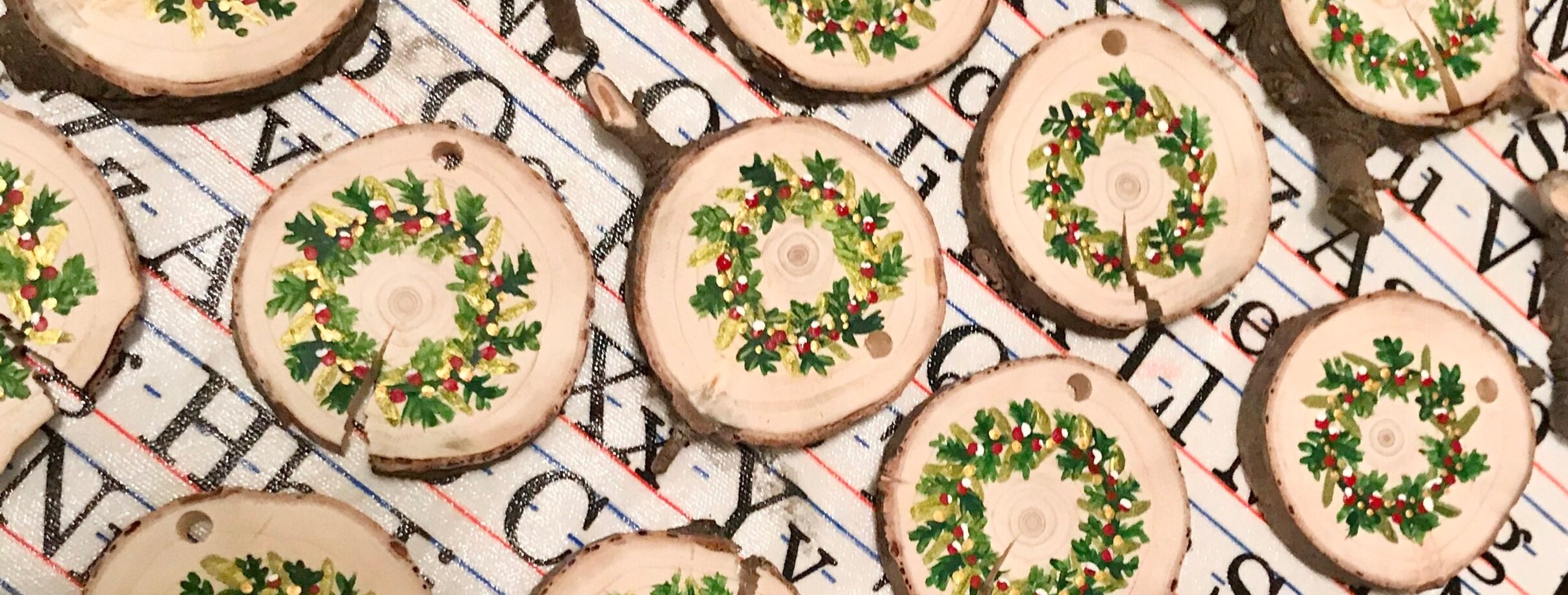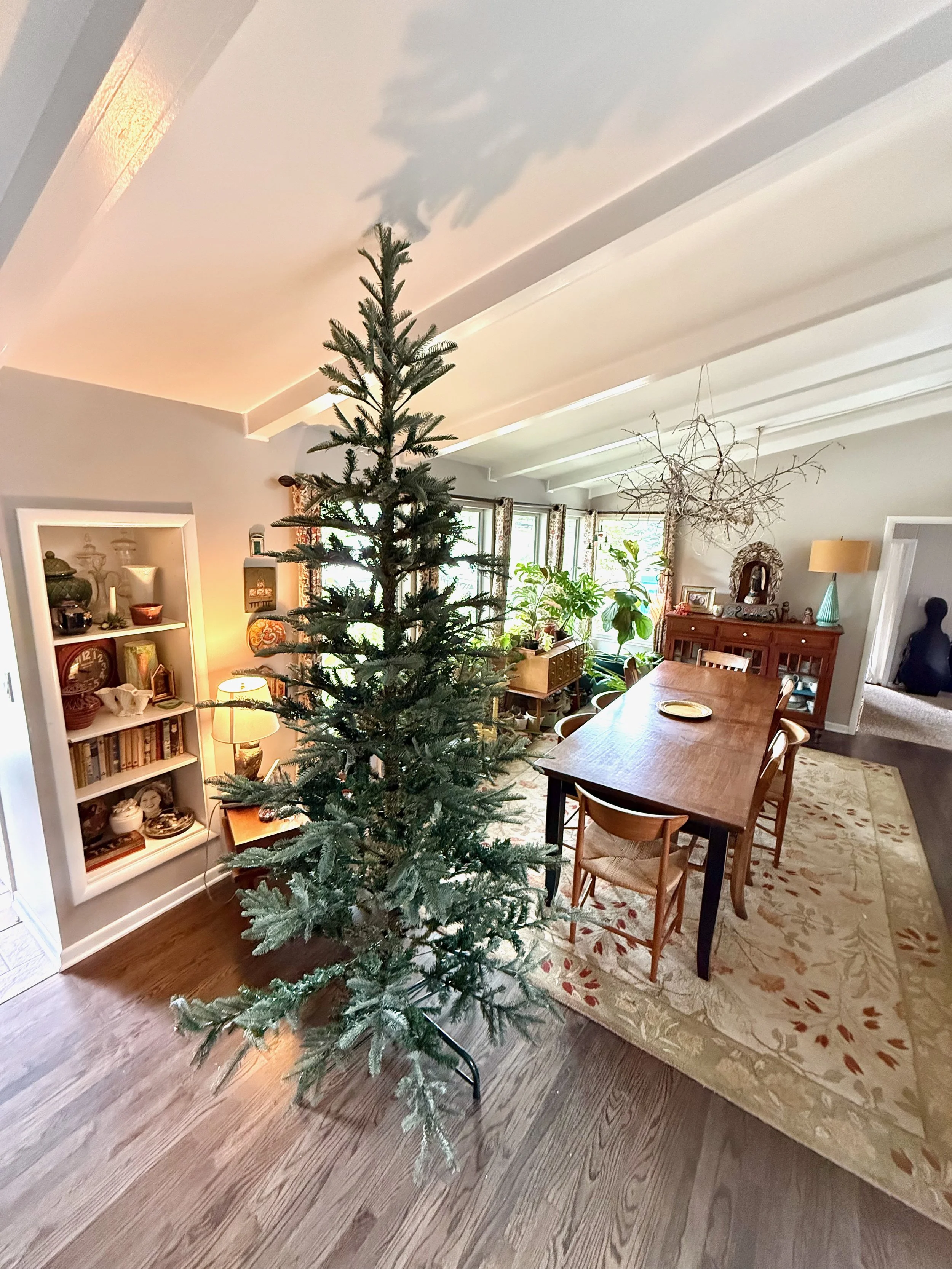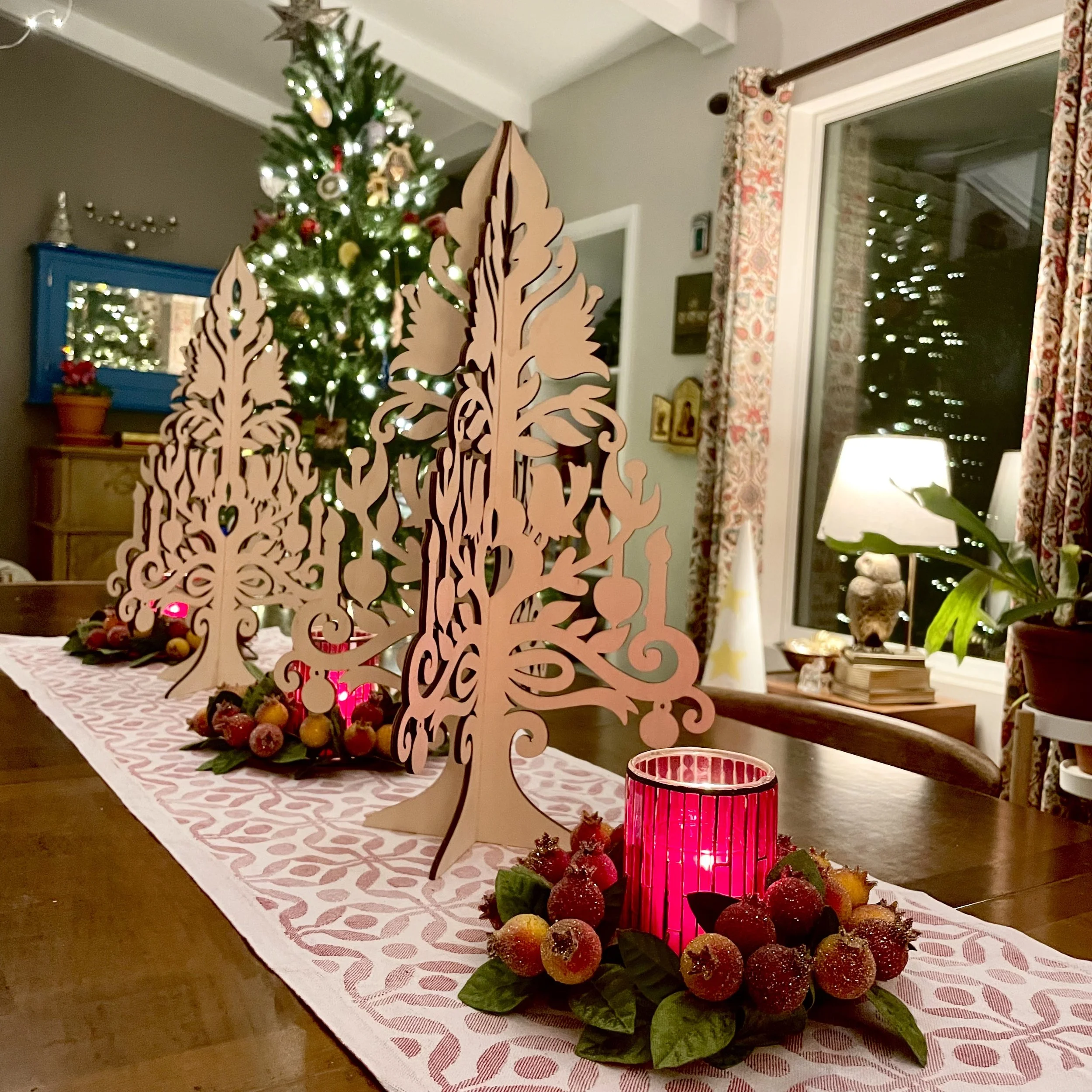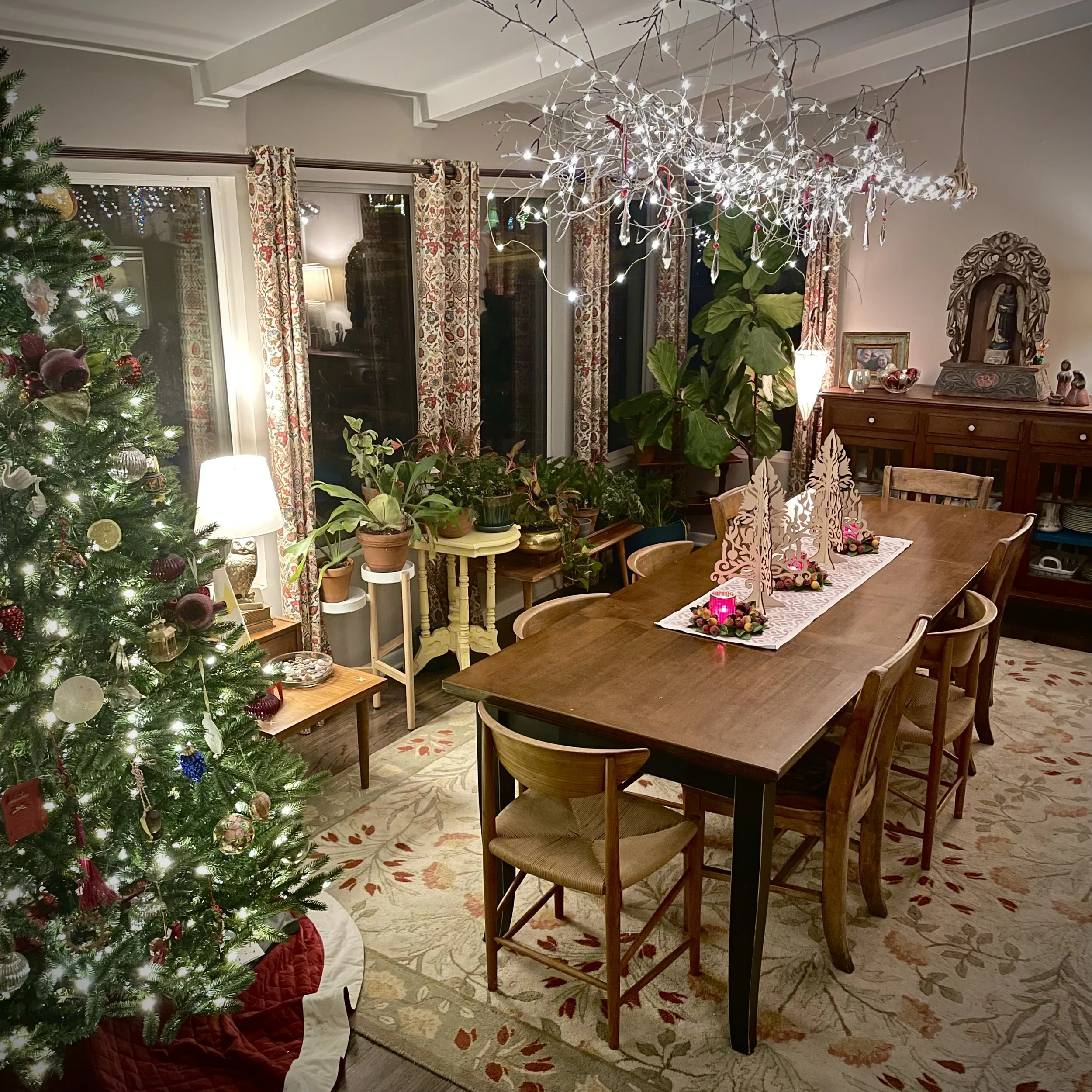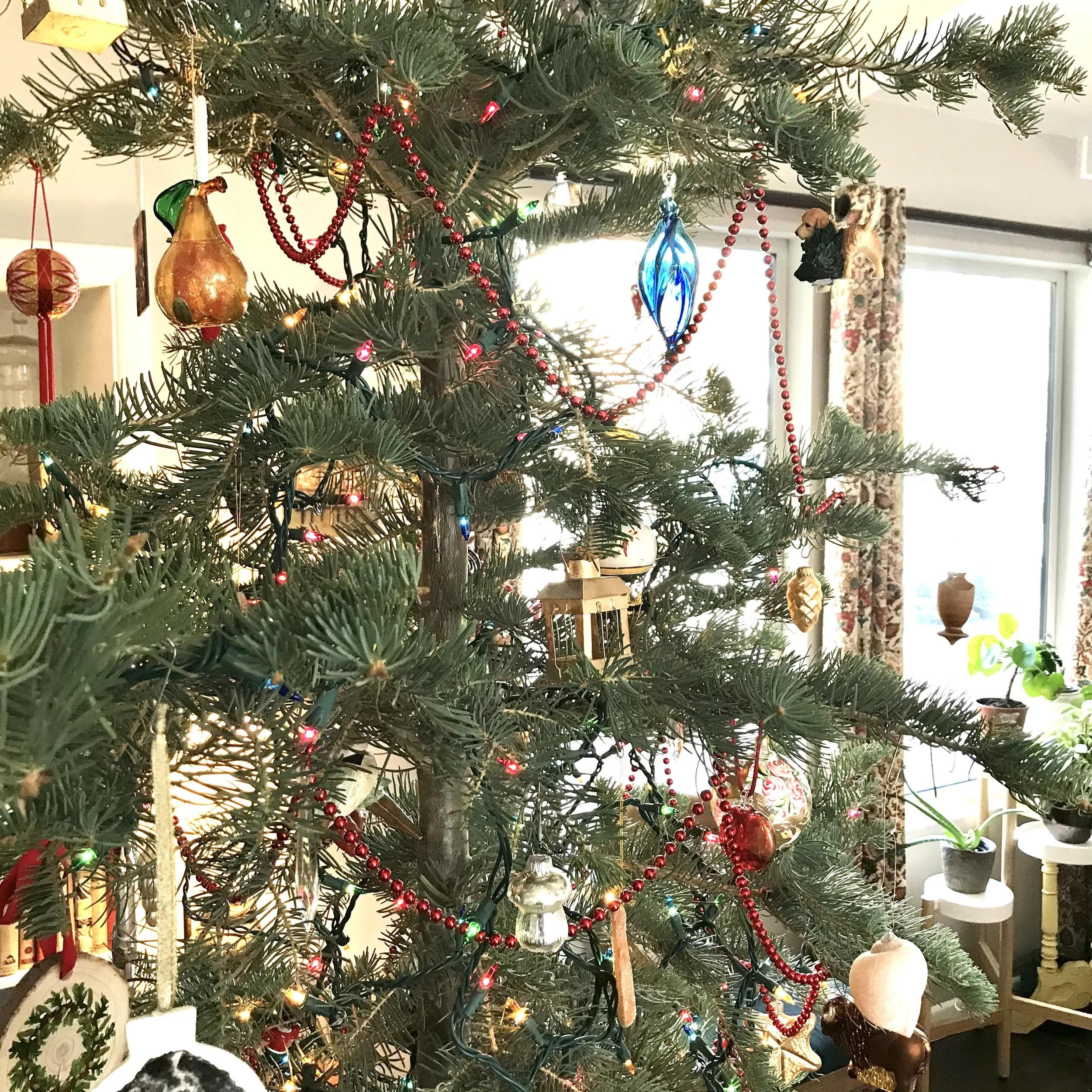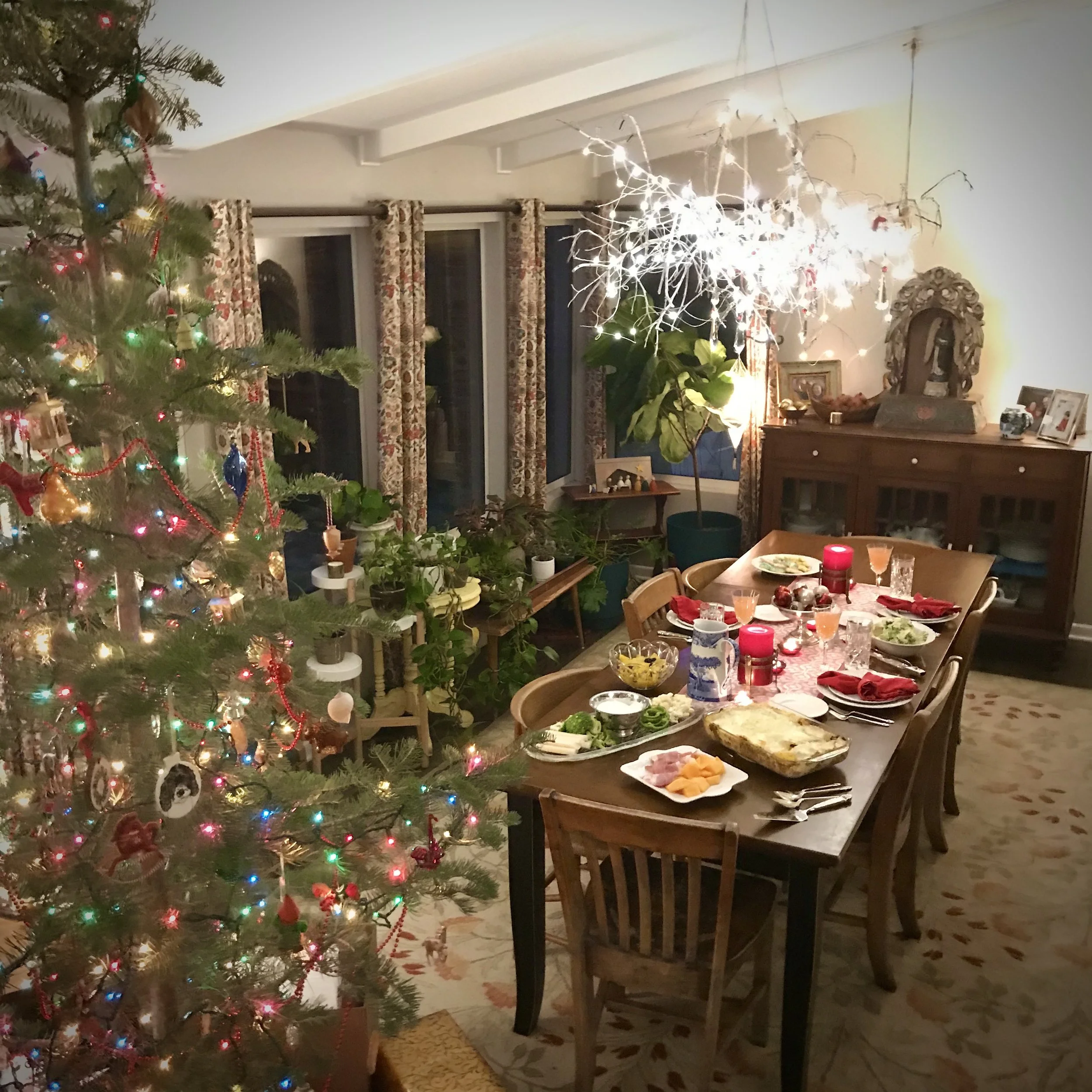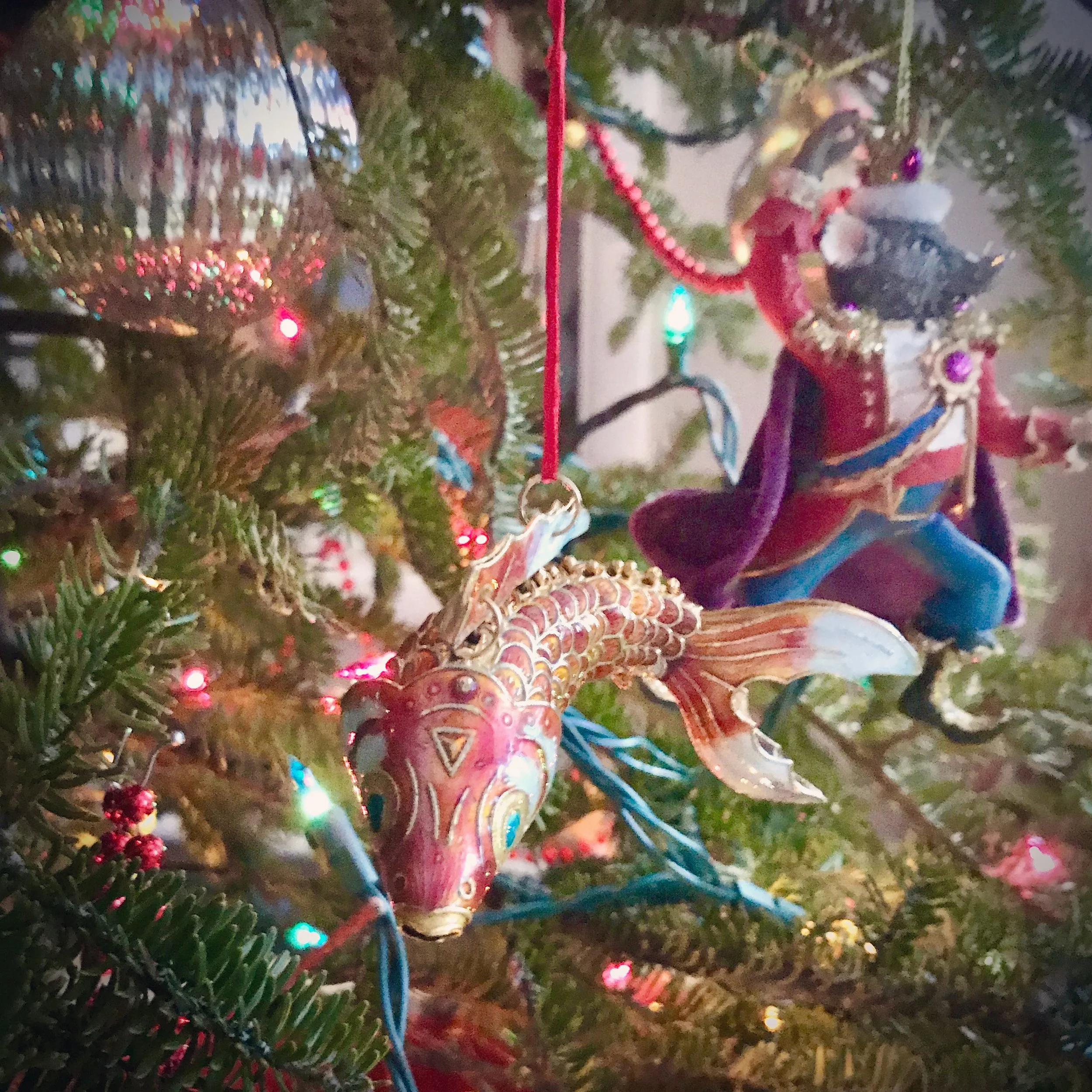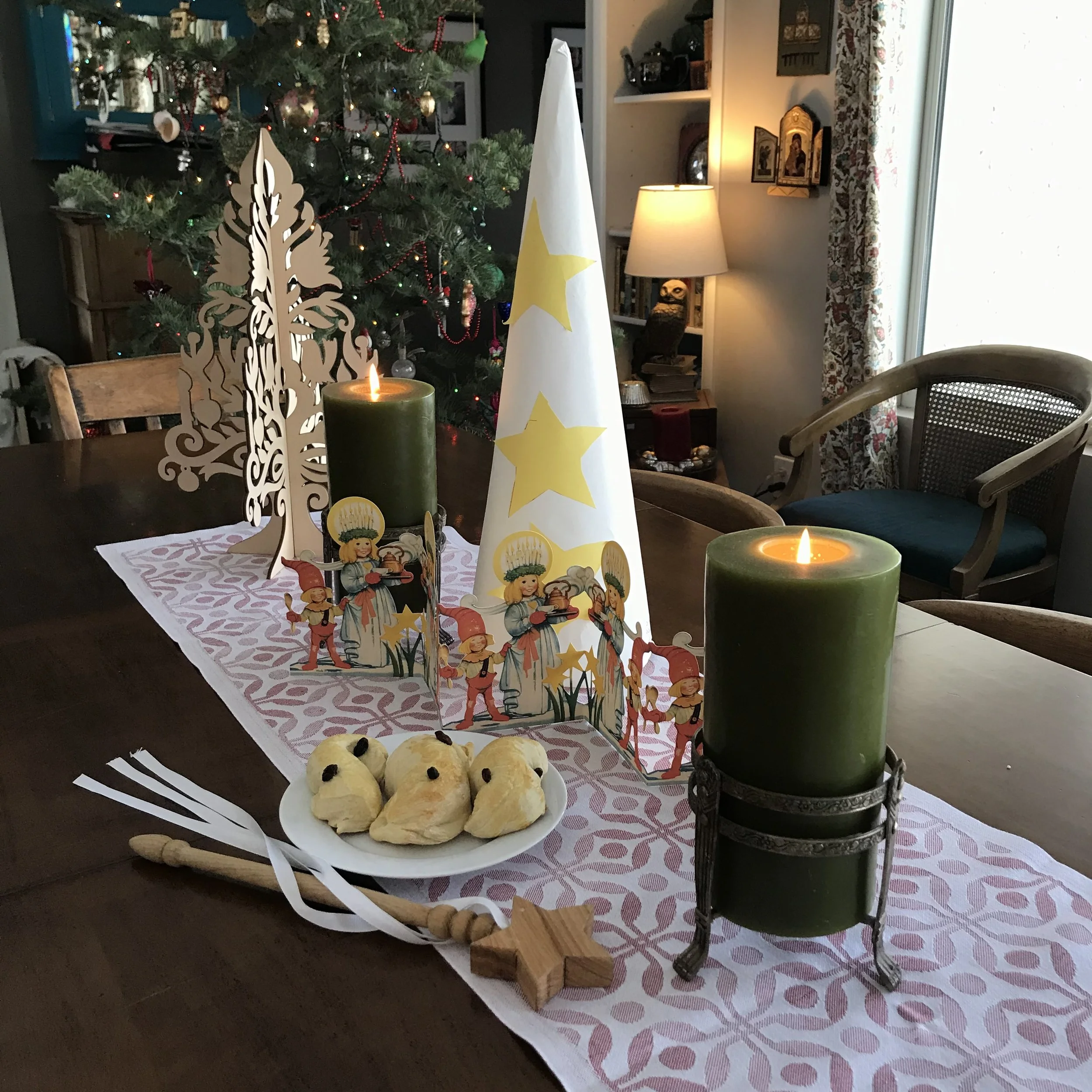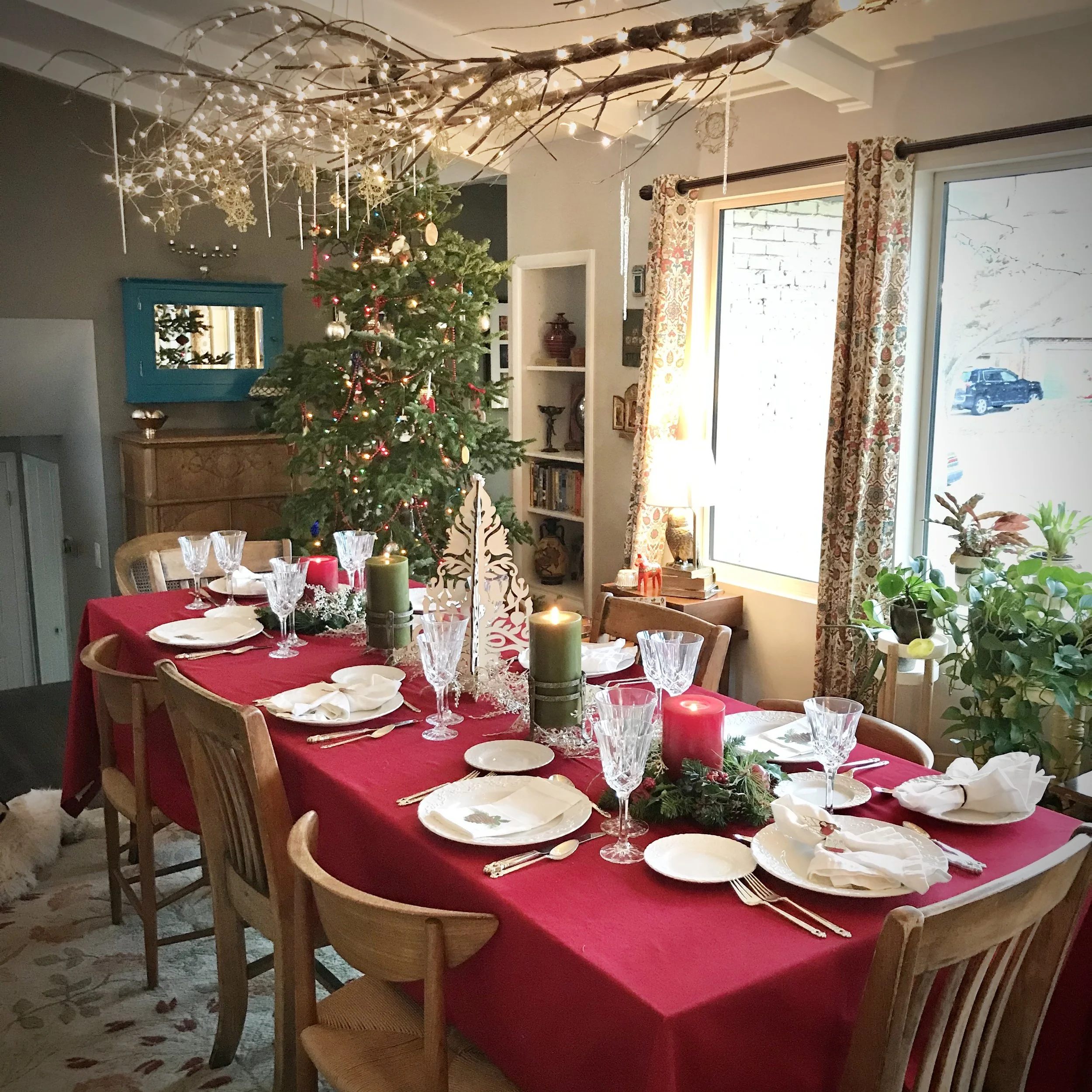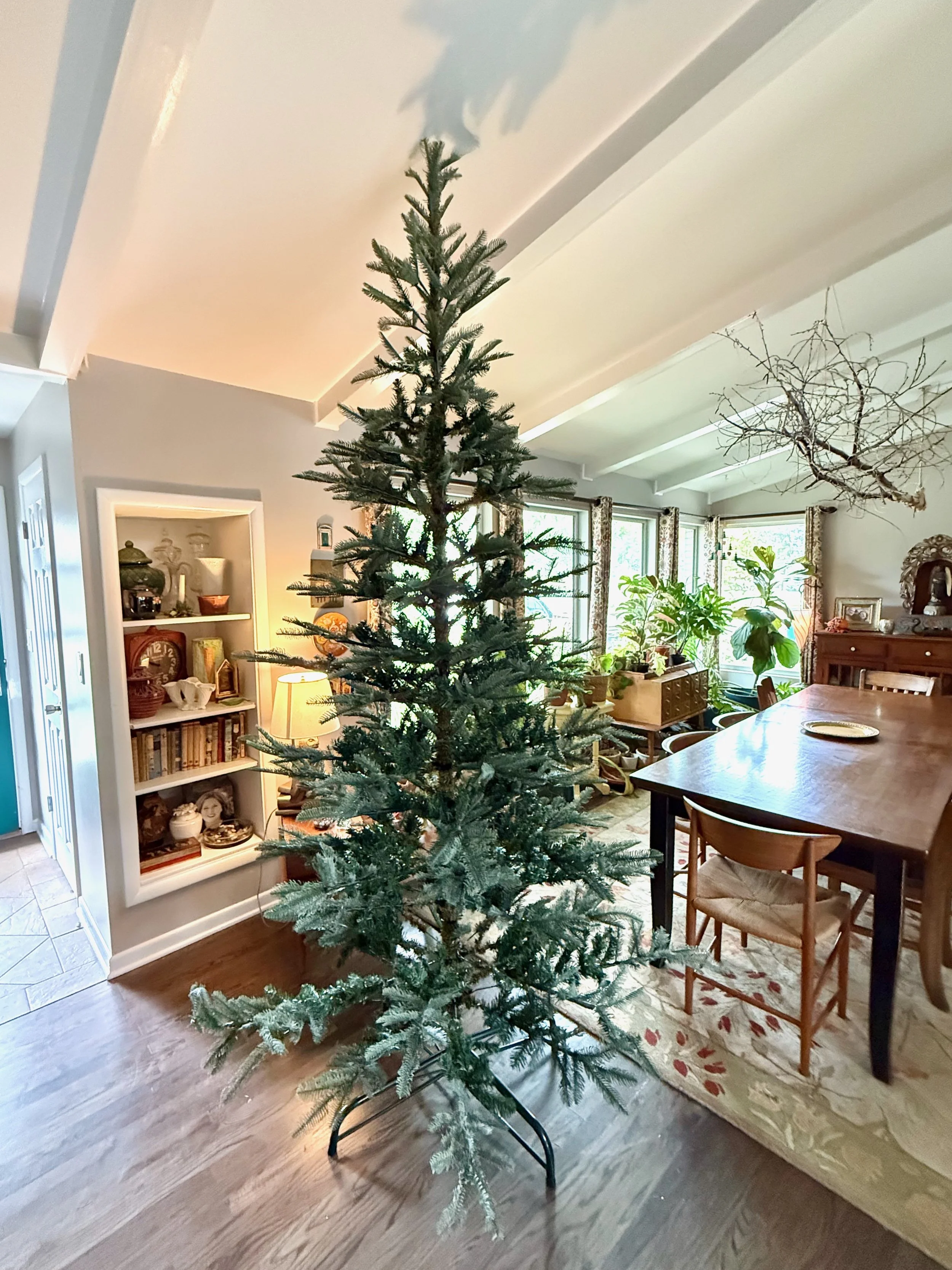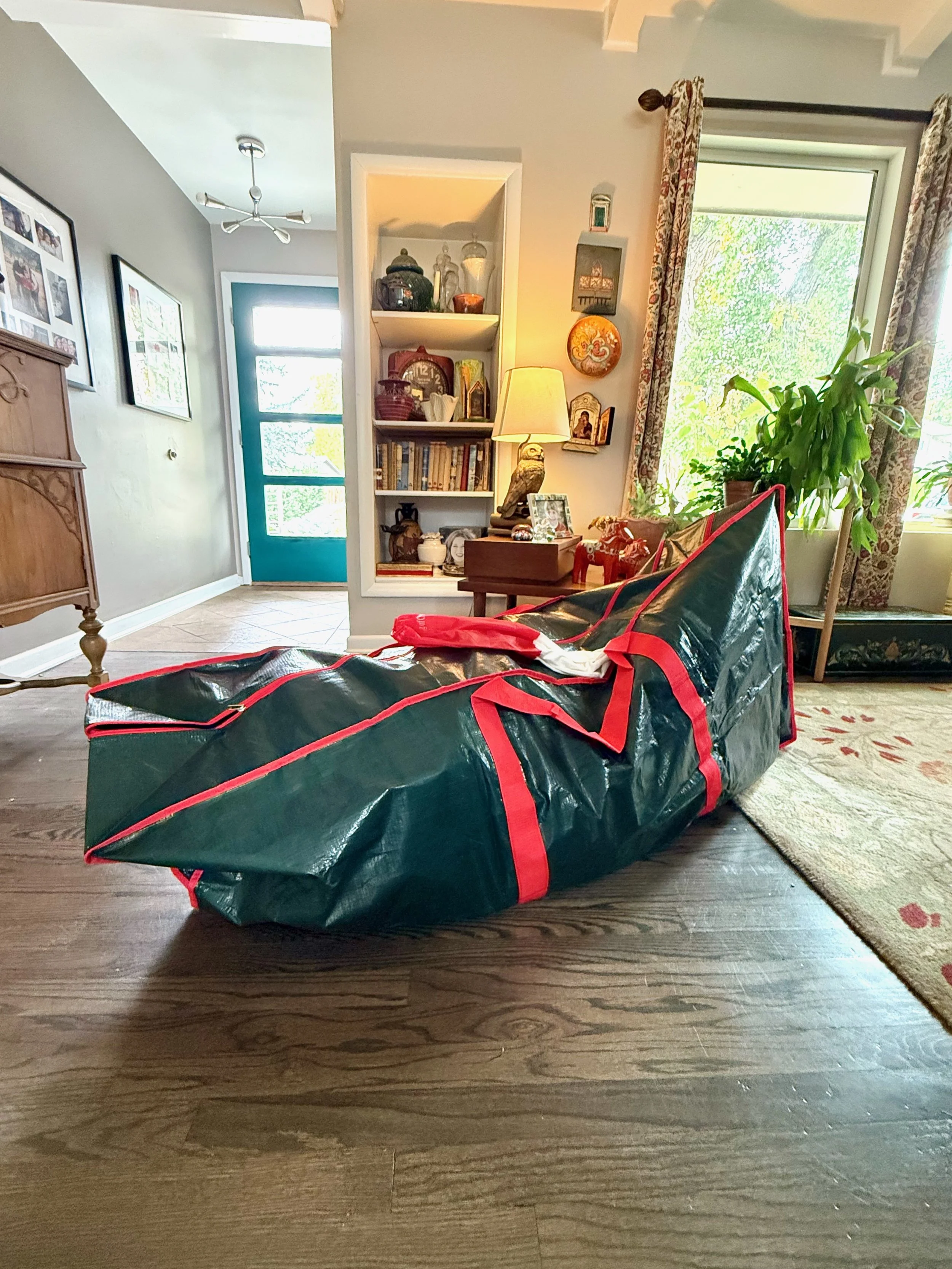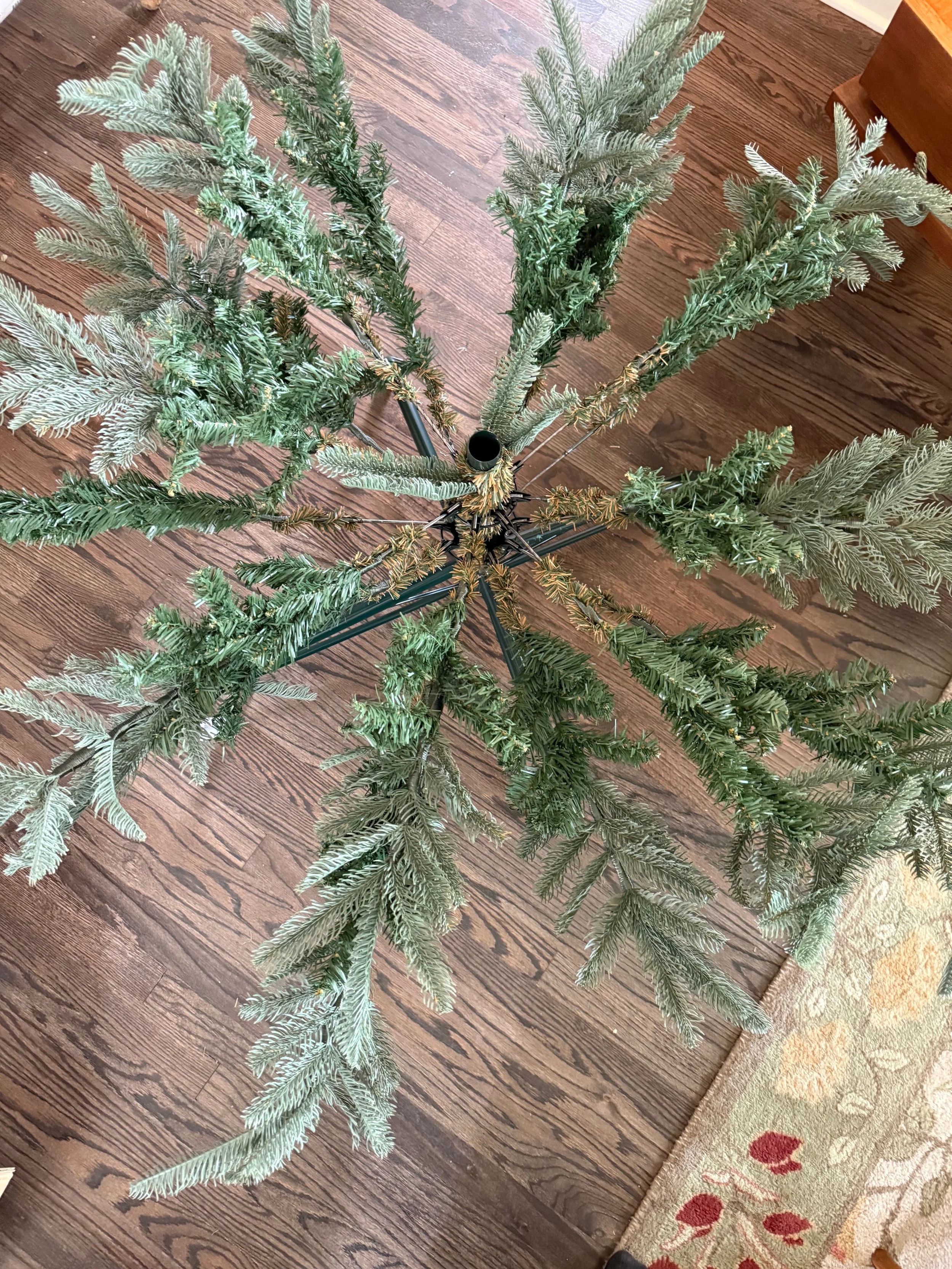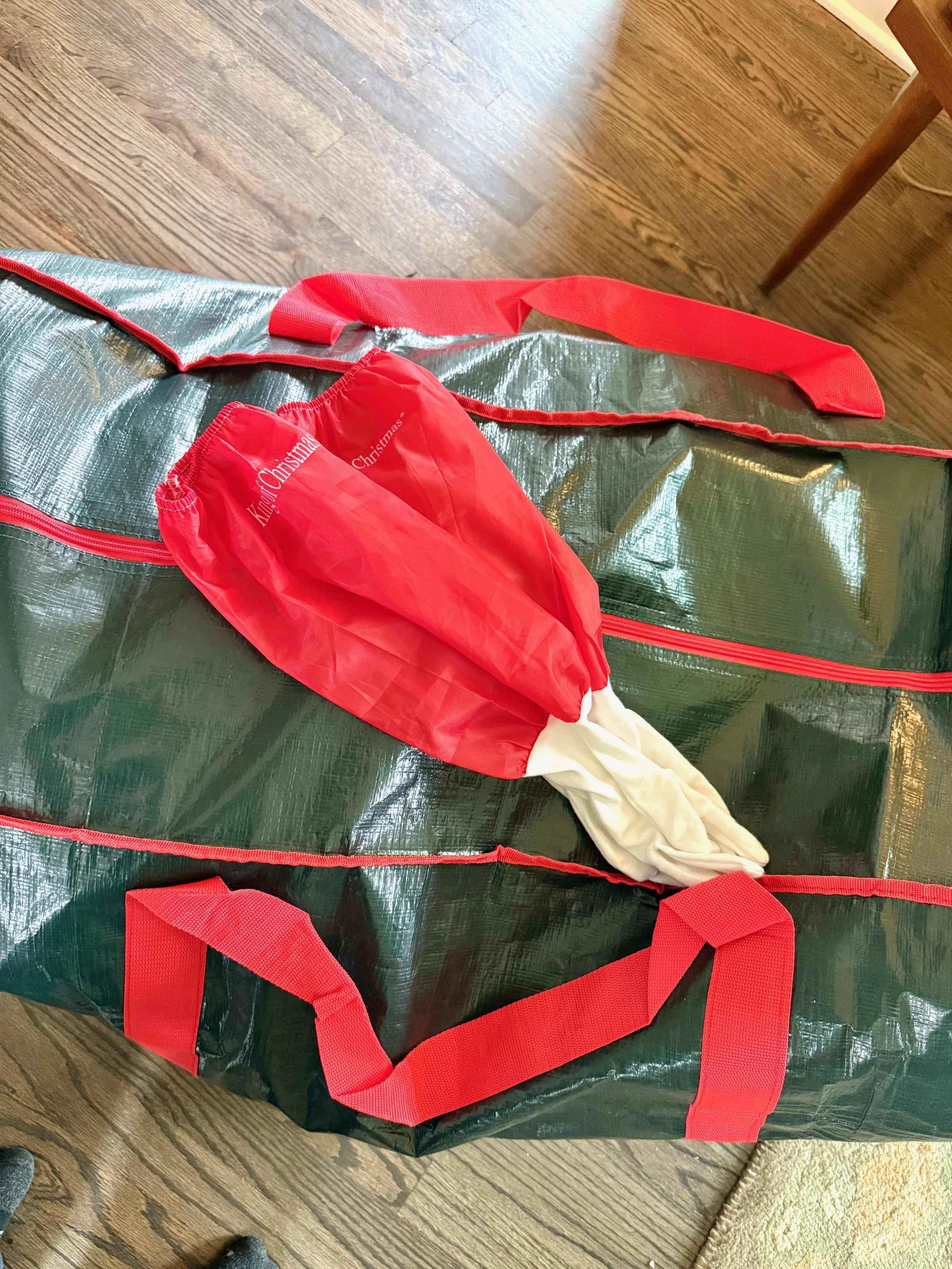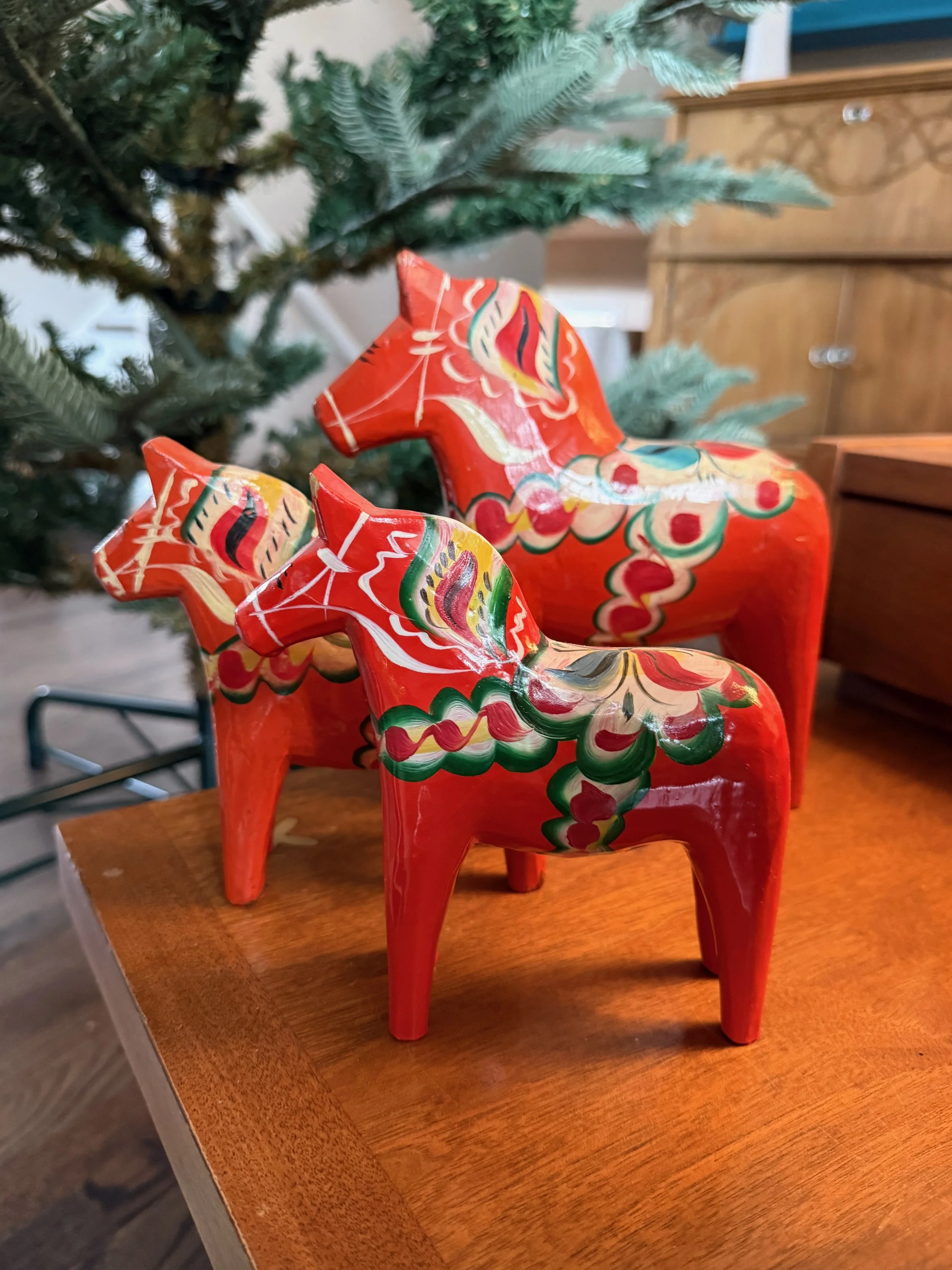Christmas
Choosing an Artificial Christmas Tree: A Guide
I absolutely love the Christmas season and decorating for Christmas might be my favorite thing all year. The centerpiece of my Christmas decor is always a beautiful Christmas tree filled with my ornament collection. I started collecting ornaments as a child, and putting them up each year reunites me with people and places and events from decades of holiday seasons. Displaying such a deeply personal collection requires the perfect Christmas tree.
When our crawlspace flooded last year, our artificial Christmas tree was destroyed. We had purchased that tree at least 15 years ago, and I hadn't shopped for an artificial tree since then, so I needed to do some research.
Real or artificial? Our family generally alternates depending on our travel schedule. If we are going to be home for the Christmas season, we get a real tree. But if we are going to be traveling, we put up the artificial tree. That's partly a fire-safety decision. And it is one of practicality, too. Real trees need to be watered and maintained – and they can't be up for as long as an artificial tree. But I love the look and smell of a real tree. So we do a little of both.
I have had environmental questions about the sustainability of artificial Christmas trees, though, so I set out to do some research before choosing a replacement for our Christmas tree, and I learned a lot. In the end, I've decided to replace our artificial tree, and King of Christmas sent their 9' King Noble Fir which is gorgeous! More on that in a minute. But I want to take you through my research on artificial vs. real Christmas trees – and why you might choose one option over another.
Our new artificial tree from King of Christmas in our dining room — ready for decorations!
Disclosure: King of Christmas sent me a tree to review and post about, but all opinions are my own. AKN
I like a tree with space between the branches which allows ornaments to dangle freely and shows them off.
Why Choose an Artificial Tree?
Artificial (or “faux”) Christmas trees offer several practical benefits over real ones, which often make them the preferred choice for many busy households. Some of the main advantages:
One‑time purchase: You can use the same tree year after year, spreading the cost over many seasons. We would not have gotten rid of our tree even after 15 years if it hadn't been ruined in the flood.
Leave it up as long as you want. If you are a person who wants to put up your tree in early-November – an artificial tree is for you! Leave it up until Epiphany like me? Artificial makes that easier. Frankly, with an artificial tree the season can be as long as you like with no worries.
Low maintenance: No watering, no needle drop, and less mess overall.
Consistency & durability: High-quality artificial trees tend to hold their shape, remain fuller over time, and resist degradation.
Safety & convenience: There’s less chance of fire from a drying-out real tree, and many artificial trees come pre-lit or are easier to string with lights.
Flexibility of design: You’ll find artificial trees in many styles (e.g. “King Noble Fir” silhouettes, flocked/“snowy” finishes, pre-lit, hinged-branch designs, etc.). You can also pick a size that fits your space comfortably (e.g. a 9′ tree for a tall ceiling room).
Cost: if you keep your tree for the recommended 15-20 years, it is significantly cheaper to have an artificial tree over time. However, at the initial outset, an artificial tree will probably be more expensive.
These benefits come with trade‑offs, especially around environmental impact, materials, and end-of-life disposal. It’s helpful to look at both sides before you commit. And to help you further, I have included links to some of the research I considered in my reading in the Sources at the end.
Ecological & Environmental Considerations
When comparing real vs artificial trees, the environmental picture is nuanced. There’s no one-size-fits-all winner, because much depends on how far the tree travels, how long you’ll keep the artificial tree, how the real tree is disposed of, and what materials are used. Here are key points to consider:
Real Trees: Pros & Cons
Pros:
Carbon sequestration while growing: Real Christmas trees absorb CO₂ as they grow. On a tree farm, new saplings are planted when others are harvested, so carbon uptake is cyclical.
Habitat: Christmas tree farms aren't terribly diverse, but they do provide shelter and habitat for birds and other animals while the trees grow for 10-20 years.
Biodegradable & recyclable: Real trees can be chipped, mulched, composted, or used for erosion control after the holiday, returning carbon/nutrients to the soil.
Support for local agriculture: Buying from a nearby tree farm helps local economies and reduces long-distance shipping and we always want to support small businesses where we can.
Cons / Challenges:
Pesticide use, fertilizer, water consumption: Many commercial tree farms use herbicides, pesticides, or fertilizers, which can contribute to soil or water pollution.
Transportation emissions: Shipping real trees from far away (or consuming fuel to go pick one up) adds to the carbon footprint.
Disposal method matters: If the tree ends up in a landfill, it may generate methane or fail to decompose properly (especially if buried).
Short usage period: A cut tree is typically displayed only some weeks before it begins to dry out and lose needles, so its “active life” is short.
My Perspective
When we lived in Minnesota, each year we drove up the hill – less than 2 miles – to a Christmas tree farm and cut our own tree. It cost $25 dollars to do so, we had very tall ceilings, so we could get a HUGE tree. And they were so fresh that they lasted for 6 weeks or more.
Here in Colorado, though, there aren't very many Christmas tree farms, and while you can get a permit to cut a tree in the forest, those don't tend to be the kinds of trees which make for the best ornament displays. I tend to buy a Noble Fir, a variety that's hard to grow here and which has been shipped in from Oregon or Washington. That adds to the carbon footprint of my tree purchase. And the trees have been cut and shipped weeks ago. They just don't last as long as a result.
Artificial Trees: Pros & Cons
Pros:
Reusability: Use year after year (ideally many years), so the per-year impact drops the longer you keep it.
Less mess, less water, fewer pests: Because it’s synthetic, you don’t worry about watering, dropping needles, or insects hitching a ride inside.
Design consistency: The tree maintains its shape, fullness, and aesthetic appeal even after many years.
Cons / challenges:
Material & emissions up front: Most artificial trees are made from plastics (often PVC) and metal, which are energy-intensive and fossil-fuel derived. Manufacturing and transportation (especially overseas) add to the carbon and environmental footprint.
Non-biodegradable: When an artificial tree reaches end-of-life, it usually goes to landfill, where it persists for decades (plastic does not break down easily).
Not Recycleable: because artificial trees are made from multiple materials, they are not easily recycled.
Toxicity/chemicals: Some artificial trees may include flame retardants, phthalates, or lead; and manufacturing processes may release pollutants.
Microplastic shedding / indoor dust: Over time, bits of plastic (microplastics) might shed or degrade, which can contribute to indoor air dust or microplastic pollution
My Perspective
The artificial tree we needed to replace wasn't awesome, to be honest. I bought it 15 years ago. It was pretty inexpensive and not the shape or style I would choose today. But I wasn't planning to replace it this soon. I was forced to do so because of the flooding. Otherwise, we would be using it again this year and for years to come.
Following the "trends" for Christmas trees might be the worst environmental choice you can make, frankly. Just because the tree we had wasn't one I loved, I kept it because it still served its purpose. The lights all still worked 15 years later. It looked pretty once it was decorated. And it served our needs. I also knew that the longer we kept it, the better it was environmentally.
What Does the Science Say?
Because comparisons depend heavily on assumptions (transport distance, tree species, disposal method, how many years the faux tree is kept), scientific and industry studies often reach conditional or mixed conclusions. And many of these studies and recommendations come from industry groups that represent interested parties – Christmas tree growers or manufacturers. Here are some findings worth noting:
A life-cycle analysis commissioned by the American Christmas Tree Association (a trade group for Christmas tree manufacturers) compared a typical artificial tree with a typical real tree. It concluded that over multiple “environmental indicators,” the difference between them is small overall — and whether a faux tree is more sustainable depends heavily on how long you use it, how real trees are disposed of, and how far they traveled.
That same study suggested a “break-even” period: if you keep the artificial tree for 8+ Christmas seasons, it may become more environmentally favorable than buying new real trees each year.
Some other studies (and critics) argue that you may need to use a fake tree for 10, 15, or even 20 years for it to “pay back” its upfront environmental cost.
Some analyses show that real trees, when composted or recycled properly, have lower net greenhouse gas emissions than artificial ones, especially if the artificial tree is replaced or discarded too early.
The takeaway: The “better” choice depends heavily on usage and disposal. If you’ll use the artificial tree for many years (and ideally donate or recycle it when finished), that improves its environmental case. If you buy a new artificial tree every few years, the environmental cost becomes harder to justify.
And that doesn't take into account geography. Christmas tree farms aren't viable in many parts of North America, so the choice a New Yorker makes is different from that made in San Diego with different environmental impacts, too.
In short, neither option is perfect; the sustainability “winner” depends on your habits, local recycling/composting infrastructure, and how long you keep it.
How to Choose a Good Artificial Tree
If you decide to buy an artificial tree, like we did, here are guidelines to help you pick a tree that balances aesthetics, durability, ease, and lower environmental impact:
Aim for longevity
Look for strong materials, sturdy construction, and good warranties. The more years you’ll keep it, the better your environmental return.Choose safer, less-toxic materials
Some trees use less PVC or alternative plastics (e.g. polyethylene) or avoid certain additives. Check product specs for low-VOC or low-toxin labels.Good structural design & ease of use
Hinged branches (rather than individually inserted tips) make setup and takedown easier and less prone to damage.
Sturdy metal base for stability, especially for large trees.
Modular sections (e.g. 3-piece or 4-piece) that are easy to assemble and store.
Pre-lit or light-ready: Some come with wiring built in, reducing the need to string your own lights (but if the lights die, you want replaceable bulbs or wiring).
Fullness & realism: Many manufacturers replicate the look of real species (e.g. noble fir) with layered branches and varying tip lengths.
Size & proportions
Most homeowners choose something a foot or two shorter than their maximum ceiling clearance to allow for a topper, space from ceiling, and light display.Warranty, replacement parts, and repairability
A good brand will provide replacement branches or parts over the years, so wear or damage doesn’t force you to discard the whole tree.End-of-life considerations
If possible, plan ahead: can the tree be donated, resold, or dismantled for parts or recycling? Avoid letting it rot away in a landfill if you can.
My Choice:
the 9′ King Noble Fir
from King of Christmas
After a lot of consideration, I chose King of Christmas' 9 ft. King Noble Fir for a variety of reasons:
Tall & Dramatic
A 9-foot tree offers dramatic scale for rooms with high ceilings or open spaces. It commands attention and allows for grand decorations. We have two good spots for a Christmas tree – in the dining room and in the family room. This tree will be perfect for the dining room – it is big, but not so full that I have to completely rearrange the furniture.
Noble Fir Silhouette
I always look for a Noble Fir when we buy a real tree. I like the spacing of the branches which allows my ornament collection to shine.
High Quality & Realistic
King of Christmas is known for producing premium trees with realistic branch density, multi-tone foliage, and sturdier construction. They are also designed to last, which helps make artificial trees more sustainable in practice.
Made to Last
This King of Christmas tree is well-made including hinged branches and a strong metal base. It is designed for years of use and easy storage. These features help prevent damage, making it more likely you’ll keep it for 10+ years (which is important for the environmental “payback” timeline).
Value over Time
Though the upfront cost of a quality tree is significant, spreading that cost over many years can make it more cost-effective. If you store the tree carefully and treat it well, it can outperform lower-quality artificial trees which you might replace sooner.
It's pretty!
We put up Christmas trees because they are beautiful, and a full, tall, realistic tree fills your home with a holiday ambiance. Choosing a well-made tree may reduce the temptation to “upgrade” too often, which helps your environmental case by extending its useful life.
King of Christmas trees come with a storage bag which keeps them dust-free.
Fold-down branches and metal connections mean this tree will last longer and look better for years.
Tips for Choosing an Artificial Tree
Check your ceiling height and room dimensions before choosing tree height. A 9′ tree demands not just vertical clearance, but also adequate base support and room for ornaments and tree skirt.
Lighting and power: pre-lit trees are convenient, but make sure the wiring is rated and replaceable.
Balance realism and maintenance: very dense trees can look beautiful, but can also be harder to decorate or to hide wires in.
Clean and inspect: each season, dust or vacuum the tree gently, check for broken branches, and ensure lights still work
Plan for storage: use a sturdy box or tree bag; avoid stacking heavy items on top of the tree during off-season storage.
Offset your carbon / footprint elsewhere: your tree is just one part of your holiday impact (decorations, travel, food, gifts). If you invest in energy-efficient lights, sustainable decor, or carbon offsets, that further mitigates your overall footprint.
The gloves included with my new tree kept my hands clean and scratch-free while setting up.
To maximize the benefits, you’ll want to:
Use it for many years (10+ if possible).
Store it properly (dry, cool, protected cover) to prevent mold, warping, or branch damage.
Repair or replace parts as needed, rather than discarding the entire tree.
If you ever sell or donate it, do so before it ends up in a landfill.
at the close…
Choosing an artificial Christmas tree is a balancing act. The practical benefits (convenience, no mess, durability) are real, and an environmentally defensible case can be made — but only if you commit to long-term use, minimize turnover, and consider disposal thoughtfully.
Our new King Noble Fir from King of Christmas ticks all of the boxes: it has a great scale, aesthetic appeal, and good potential for longevity. If we care for it properly, we will enjoy a beautiful holiday centerpiece for years to come with all of the benefits that come with it. I can't wait to get it decorated for Christmas!
Subscribe now so you never miss a thing!
Resources
American Christmas Tree Association. “Are Real or Artificial Christmas Trees More Environmentally Friendly?” Christmas Tree Association, https://www.christmastreeassociation.org/are-real-or-artificial-christmas-trees-more-environmentally-friendly. Accessed 10 Oct. 2025.
Blog of the National Wildlife Federation. “Are Real or Fake Christmas Trees Better for the Environment.” NWF Blog, 28 Nov. 2022, https://blog.nwf.org/2022/11/are-real-or-fake-christmas-trees-better-for-the-environment. Accessed 10 Oct. 2025.
Center for Environmental Health. “Artificial or Real Christmas Tree? What’s Better for You and the Environment.” Your Health, 2 Dec. 2020, https://ceh.org/yourhealth/artificial-christmas-trees/. Accessed 10 Oct. 2025.
Institute for Environmental Research and Education. “Are Fake Christmas Trees Better for the Environment?” IERE, https://iere.org/are-fake-christmas-trees-better-for-the-environment/. Accessed 10 Oct. 2025.
Savage, Henry. “Real vs. Artificial Christmas Tree: Which Is Best for the Environment?” The Washington Post, 25 Nov. 2022, https://www.washingtonpost.com/climate-solutions/2022/11/25/artificial-tree-real-christmas-environment. Accessed 10 Oct. 2025.
The Inquirer. “Real or Artificial Christmas Tree: Which Is Better for the Environment?” The Inquirer, 23 Dec. 2019, https://www.inquirer.com/science/climate/christmas-tree-real-artificial-environmental-impacts-20191223.html. Accessed 10 Oct. 2025.
Yale University Office of Sustainability. “Where Did Your Christmas Tree Come?” Yale Sustainability, https://sustainability.yale.edu/blog/where-did-your-christmas-tree-come. Accessed 10 Oct. 2025.
Michigan State University Extension. “Environmental Effects of Christmas Trees.” MSU Extension, https://www.canr.msu.edu/news/environmental_effects_of_christmas_trees. Accessed 10 Oct. 2025.


